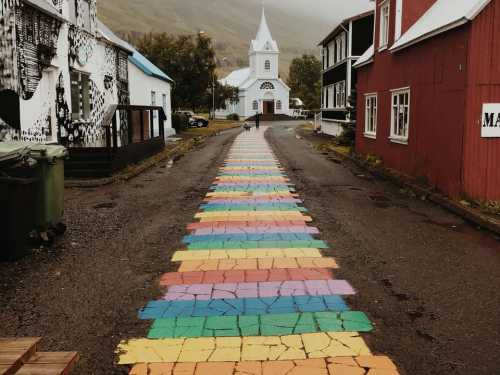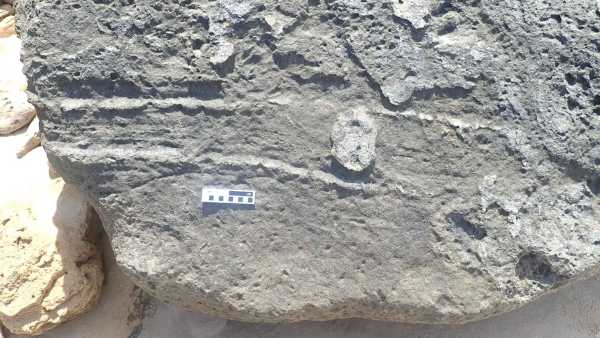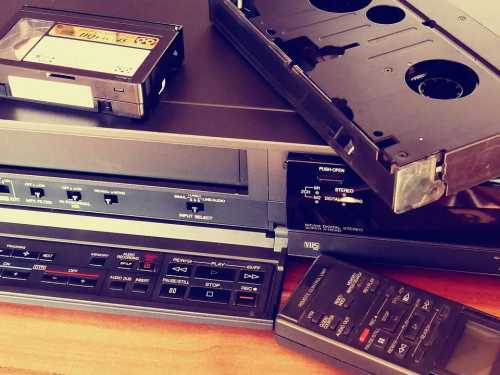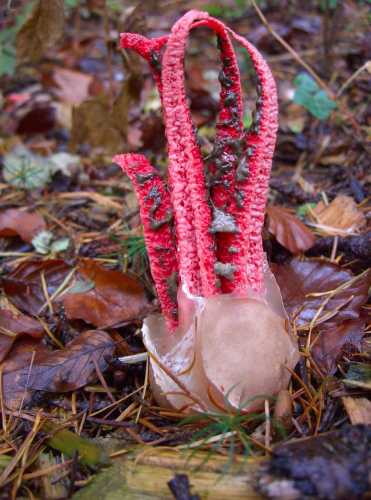
I'm telling you how and what people live in one of the most remote and unusual countries in the world, and what surprised me.
I recently visited Iceland, a long-standing dream of mine that I finally got to fulfill. I visited the most famous sights, talked to locals and expats, and lived there for a few days.
So, what strange things were hard for us to believe, but turned out to be the truth and the norm of life for Icelanders?
Geothermal energy is used throughout Iceland to heat buildings and supply them with water.
In Iceland, like in our country, there is also central heating. The difference is that Icelanders use geothermal energy from volcanoes and geysers, which are abundant in the country, as a heat resource. The costs of the energy received are minimal, so utility bills for heating are many times lower than in the rest of Europe.
When I learned that almost all the energy used in homes and all buildings in Iceland comes from geothermal sources, I couldn't believe it. This fact still seems strange and unreal, something from the realm of fantasy! Agree, it's wild to hear that people are literally warming themselves from the earth!
Geothermal springs and geysers in Iceland are used not only to heat homes, but also to provide hot water and even to heat sidewalks in winter. This is a completely normal thing for all Icelanders. No one here is surprised by this.
The purest drinking water flows from any tap across the country.
Iceland is a country where you don't need to buy water, because you can get it from the tap anywhere, even in a public toilet! Because it is the cleanest. This is due to the fact that there are a lot of springs and glaciers on the island, from which water flows into every tap.
Icelandic glacial water is free of chemicals, making it officially recognized as one of the cleanest waters in the world. By the way, the hot water also comes to the houses directly from the springs and is heated by geothermal energy. It's still unbelievable that this is possible!
And in shopping centers (more precisely, in supermarkets) there are special machines where you can fill a bottle with clean drinking water absolutely free of charge. Despite this fact, I still bought water because of the beautiful packaging. Here it is a separate form of art, bottles in the shape of an ice floe or iceberg are a great marketing move. Experienced tourists buy bottled water once and then replenish their supplies for free.
Almost all residents are related to each other
Perhaps this is one of the most terrible and unpleasant facts about Iceland, which worries even Icelanders themselves: everyone here is distantly related to each other.
This is a real problem from the point of view of genetics and the health of the nation, which is why Iceland loves and welcomes immigrants from different countries of the world, especially men, to, so to speak, “dilute” its gene pool.
Imagine the situation: Iceland is a small island with not much habitable land, and accordingly, a small population — only about 360,000 people, of whom about 150,000 live in Reykjavik.
The rest of the people are scattered across the island, some towns (as cities with a population of up to 20,000 are called) have only 2,000-3,000 inhabitants! And this is the norm for Iceland. These are not one or two cities with such a small population, but half the country.
Who to start a relationship with, build a family and have children with? It is obvious that of these 3,000 people living in the same area, almost all are related to each other. There is no particular choice. It is for this reason that tourists visiting Iceland are very loved by the locals, they easily get to know each other, make contact.
For us, it's crazy that there's a problem with a shortage of people somewhere. Our genes are a mixture of peoples: Poles, Belarusians, Germans, Lithuanians, etc. What can't you say about Icelanders?
Icelanders do not have surnames in the usual sense.
Icelanders don't have surnames, at least not in the way we're used to. Instead of a surname, they use patronymics, which refer to the father's name. Let me give you an example to make it clearer.
Let's assume that the child's father's name is Jón (a very common name in Iceland), then his son will bear the surname Jónsson (where “son” in translation means son), and his daughter – Jónsdóttir (“dóttir” – daughter, respectively). This is quite normal and familiar for Icelanders, but for us, it is quite strange and unusual. And what about the family name? After all, it turns out that parents, their children and grandchildren will have different so-called surnames, as will all offspring.
The bars only serve drinks, you cannot order food or snacks.
Another strange thing about life in Iceland is their drinking culture. I was shocked that you can't order food in bars, or at least some snacks, like crackers, chips, nuts. They're just not on the menu! In Iceland, people drink alcohol just like that, without anything!
Icelanders start relaxing in bars as early as 6-7 pm, imagine what state they are in by 9-10 pm, considering that they drink a lot (a lot) and don't snack!
It's crazy to see people sitting at tables with glasses without any food. And the consequences of this are also crazy to see…
At 11 pm in Reykjavik, you can only eat shawarma (they call it doner there), because shawarmas are the only type of establishment that is open until late. Moreover, doner costs the same as a normal full meal in a restaurant.
Therefore, all tourists, as well as Icelanders themselves, after dancing have to go to a local eatery (I found only two of these in the entire center of Reykjavik) to satisfy their hunger (by the way, shawarma restaurants belong to Arabs). If you are going to Iceland, keep this fact in mind and do not postpone dinner for a later time, as I did, not knowing the peculiarities of their way of life.
Alcohol is expensive and can only be bought in specialized stores.
There are two large and main supermarket chains in Iceland: Bonus and Kronan, where you can buy absolutely everything, if we are talking about products, they will be the freshest and of very high quality. However, you will not find alcohol on the shelves, at most – beer with a strength of 3-4%.
The rest of the drinks can be purchased in specialized stores, which close at about 6 pm and are closed at weekends. In bars and restaurants, a glass of beer/wine will cost from 10 euros, the average price is 15 euros (a couple of times I had to pay 20 euros).
But even in the so-called alcohol markets, the prices are also high, wines from 11 euros, you can't find anything cheaper. This is due to the fact that Iceland is a sparsely populated country, the working day is short, there is nothing to do on the island. So that the population doesn't get drunk, and tourists know the measure in alcohol, the prices have been made unaffordable (they would have come up with snacks, otherwise there would be inconsistency). And plus, transporting alcohol is far and expensive, which also affects consumers (the cheapest wines are from the states).
Shops close early, as do the kitchens in establishments.
Continuing the previous point, I will add that the kitchen in establishments closes early, at around 7 pm, and shops are open until 8 pm.
If you feel like buying groceries or eating later, you can go to the 24-hour store “10-11”, there are such stores in Reykjavik (there are none in the towns), but the ready-made meals will be disassembled (demand for them is high in the evening), and the prices for food are 30% higher, since they are aimed exclusively at tourists.
I've been to many European countries and, in principle, I'm used to the fact that Europeans have shorter working hours than us. But not being able to order food in a restaurant is something new. Although Icelanders themselves are used to it, it's the norm for them.
Almost all attractions are free
The most expensive things in Iceland are flights, accommodation, transportation and food (the last point is very relative). But visiting the sights is a free pleasure!
The hot springs were paid, but they disappointed me a little because expectations and reality did not match.
When I flew to Iceland, I didn't know about free attractions. But, as it turned out, all the popular places are free for tourists! You don't have to pay anything for the entrance, as well as for the public toilets, which are always clean and comfortable.
So what do Icelanders do for a living, you ask? How do they keep their natural attractions clean?
Due to the accompanying services that are indispensable in Iceland: hotels, campsites, car rentals – these are the most expensive here, sometimes it is simply impossible to find accommodation, because everything is sold out, there are no places. And there is also a lot of specialized clothing designed for hiking.
They dress easily in a summery way, even if it's cold outside
My trip was in the summer, in June, but I was extremely unlucky with the weather, it was abnormally cold.
While I was in Iceland, I caught a hurricane, saw a tornado, drove through the mountains on a serpentine road during a crazy snowfall, then my company and I got stuck in a village for three days because half of the island was blocked (roads were closed due to weather anomalies).
None of us expected a real winter to come in Iceland this summer. But Icelanders themselves are basically used to the fact that there is no heat in the country, plus or minus the weather is always the same, and therefore they rejoice in any summer, walking around in their revealing outfits, despite the wild cold.
Few trees
The most beautiful and unique thing about Iceland is its nature. But one unusual fact that you don’t immediately notice is the lack of trees. After driving around the island and visiting many different locations, I noticed that there are almost no forests here.
For a person accustomed to forests and parks everywhere, this seemed very strange and wild.
It turns out that it wasn't always like this here. Trees were cut down for building and heating (let me remind you that not all areas in Iceland are intended for living, forests have to be cut down for housing), and now most of the country is open spaces with sparse plantings. Which is wild for us, but familiar to the Icelanders themselves.
But the absence of trees does not make Iceland unattractive, the natural landscapes are incomparable, simply incredible: mountains, volcanoes, glaciers, oceans, volcanic fields and beaches, geysers and craters, fjords and waterfalls.
Having visited Iceland once, I decided to return again. Because traveling around the island is only a small part of getting to know the country, central Iceland is completely different, unlike the one I saw.





